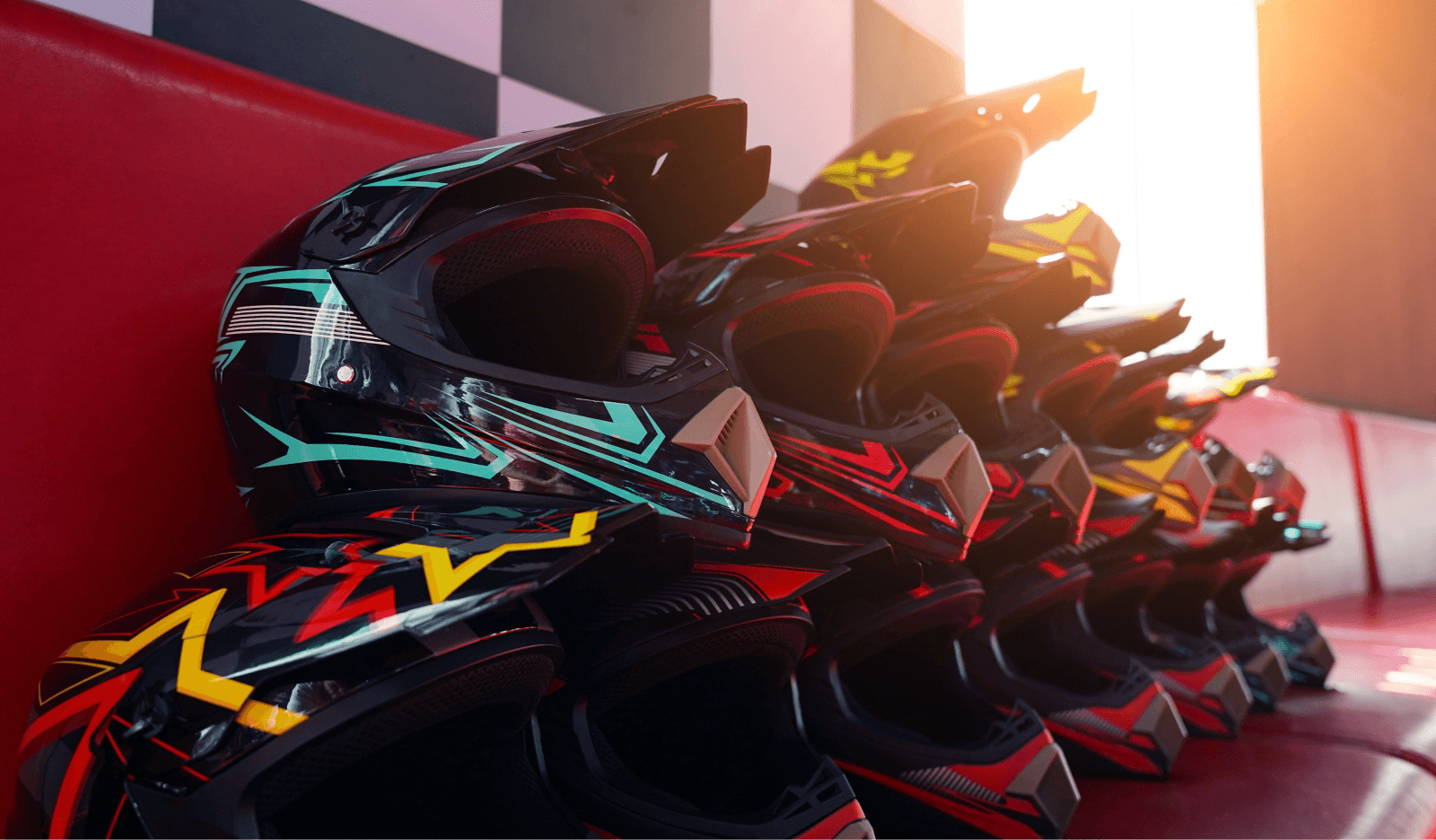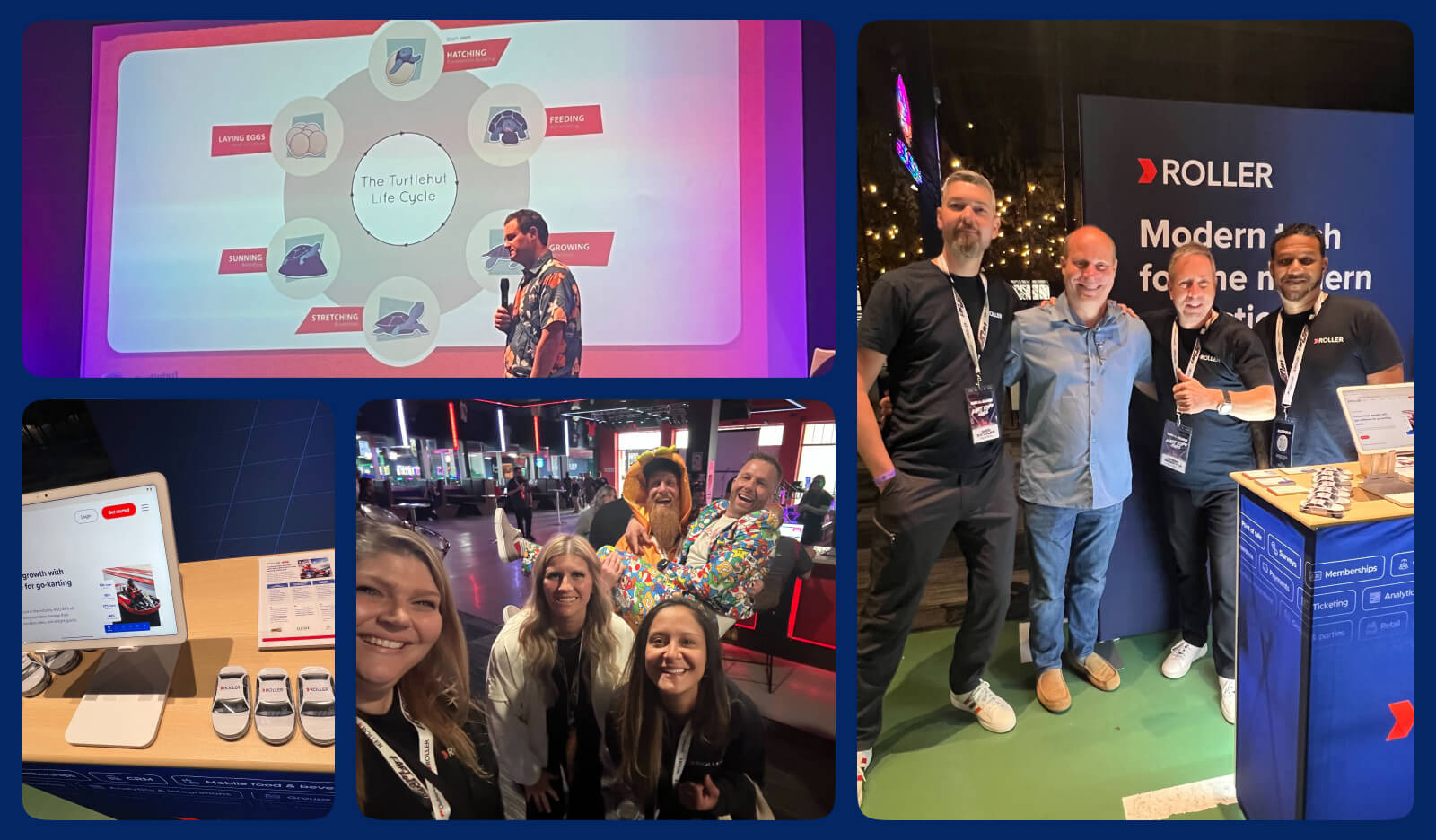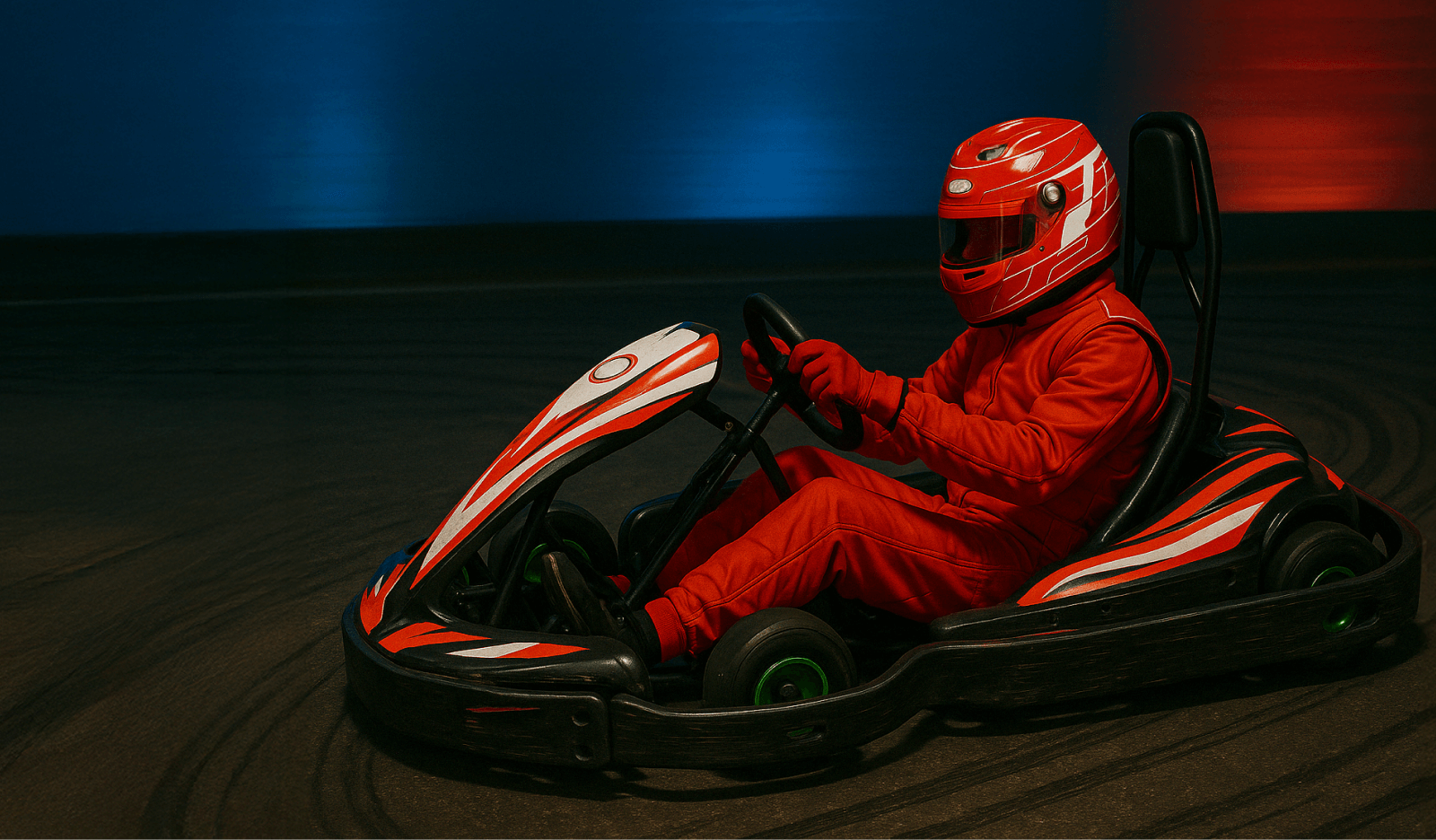.png?width=820&name=Blog%20thumbnail_How%20to%20Open%20a%20Go-Kart%20Track_%20Steps%20to%20Start%2c%20Launch%2c%20and%20Grow%20Your%20Track%20(1).png)
Thinking about turning your love of racing into a business? Opening a go-kart track is an exciting way to combine speed, fun, and entrepreneurship. Go-karting appeals to a diverse audience from families and friends to thrill-seekers and corporate groups, making it one of the most versatile entertainment ventures around.
In this guide, we’ll walk you through the steps to open a go-kart track including startup costs, business planning, equipment, staffing, and software.
Why open a go-kart track?
A fast-growing industry
The go-kart industry is accelerating fast, with global revenue expected to grow from $160.16 billion in 2025 to approximately $218.99 billion by 2034. For entrepreneurs, that means a high-energy business opportunity with broad appeal and strong year-round potential. Whether you’re planning a new venue or adding karting to an existing entertainment center, there’s a growing customer base ready to race.
Appeal for every audience
Few activities deliver the excitement of racing in the same way as go-karting. While newcomers can have a great time driving at their own pace, more competitive drivers can dive deeper into the sport, challenging track times and personal bests in a family-friendly environment.
Business opportunities
For operators, the go-kart industry offers:
- Recurring revenue potential through parties, memberships, and corporate bookings.
- Year-round demand, particularly for indoor tracks that operate in all weather conditions.
- Cross-selling opportunities with food, beverage, and arcade or VR attractions.
- Community-building potential, with leagues, tournaments, and loyalty programs that keep drivers coming back.
Opening a go-kart track lets you tap into a booming industry, build a loyal customer base, and create an experience that combines excitement, competition, and community, all while driving strong, predictable revenue growth.
Go-kart track startup costs
Opening a go-kart track is an exciting investment, and like any major venture, it comes with some upfront costs. But with the right planning, those costs can lay the foundation for a profitable, scalable business. Actual expenses will vary depending on your location, size, and business model, but here’s a breakdown of what to expect.
Key startup costs to plan for
- Property and land: This is often your largest investment. Costs depend on whether you’re buying land or leasing an existing site, as well as local zoning, size, and accessibility. Indoor tracks in high-traffic areas tend to be more expensive, while rural or suburban outdoor spaces offer more flexibility at a lower cost.
- Track construction: Once you’ve secured your location, you’ll need to design and build your track. While the price will depend on the size and complexity of the track and construction, expect to pay anywhere from $100,000 to $1 million for your track’s design and construction.
- Go-karts: Electric karts are cleaner, quieter, and easier to maintain, though more expensive initially. Gas karts are more affordable, but come with higher fuel and maintenance costs. You’ll also need to decide whether to buy or lease your fleet.
- Lighting equipment: Good lighting is essential for indoor tracks and a great way to extend operating hours for outdoor ones. Night racing adds a unique thrill and can boost evening revenue.
- Audio equipment: A reliable, high-quality sound system creates energy on the track and keeps guests engaged. It also helps your team make clear safety announcements and manage races effectively, which is an important part of keeping both fun and safety on track.
- Helmets and safety equipment: Budget for the initial cost, as well as the ongoing repair and replacement of your safety gear.
- Timing and scoring systems: Lean into the competitive nature of go-karting for your customers with a high-tech scoring system.
- Concession stands and seating areas: Help boost revenue and improve guest experiences by offering places to rest, eat and drink between races.
- Booking and POS software: Streamline your ticketing, payments, and reservations system with all-in-one go-kart software.
- Staff training: You’ll need to invest in staff development to ensure your track runs safely and smoothly.
- Insurance, permits and certifications: These will vary by location, but are necessary to operate your business legally.
- Maintenance: From tires to engines, ongoing upkeep is unavoidable.
If starting from scratch feels daunting, exploring a go-kart franchise can be a more affordable and structured option. Franchises often provide established branding, supplier partnerships, and operational support, reducing startup risk while helping you launch faster.
What to include in your go-kart track business plan
A strong business plan is your roadmap to success; it helps you clarify your vision, attract investors, and set a solid foundation for day-to-day operations. Whether you’re opening your first track or expanding an existing venue, a detailed plan will help you anticipate challenges, identify revenue opportunities, and stay focused as your business grows.
Here’s what to include in your go-kart track business plan:
- Executive summary: Include your venue’s name, your mission, your vision, and your high-level goals.
- Market analysis: Research the local market and demographics for the location you plan to operate. Understand the potential demand and your competitors.
- Business model: Break down how you intend to make money. Include revenue streams like memberships, parties, corporate events and walk-ins. Break down additional revenue opportunities like retail, food, and beverages. If you plan to host events, include that information here, too.
- Operations plan: Describe how your track will run on a day-to-day basis. Include how your staff will be structured, safety protocols, training plans, necessary equipment, and a maintenance schedule.
- Marketing plan: Break down your plans on how you will attract and retain your customers. Include features like loyalty programs, launch events and local partnerships.
- Financial projections: Go into as much detail including your startup costs, ongoing expenses, and revenue projections.
- Risk management: Because of the risk involved with go-karting, make sure your business plan includes safety, compliance, and insurance strategies.
How to choose the right location
Your location is one of the most important decisions you’ll make when opening a go-kart track. The right site balances accessibility, cost, and growth potential, and can determine how quickly your business reaches profitability.
When choosing a site, consider these key factors:
- Indoor vs. outdoor: Indoor tracks allow you to operate year-round, rain or shine, and provide more control over lighting and atmosphere. However, they often come with higher real estate costs. Outdoor tracks typically offer more space and design flexibility at a lower upfront cost, though they’re more affected by weather and seasonality.
- Urban vs. suburban vs. rural: Urban locations provide visibility, foot traffic, and a larger potential customer base, but they also come with a higher price tag. Suburban areas can strike a balance between affordability and access, while rural locations offer larger spaces for less money but may require more marketing to attract visitors.
- Parking and accessibility: Make it easy for guests to visit with plenty of parking, plus additional spaces for staff and spectators. Proximity to major roads or public transport can also make a big difference in convenience.
- Expansion potential: Choose a property that can grow with your business. Space for future additions saves you the cost and disruption of relocating later on.
What equipment do you need to open a go-kart track?
The right equipment is the backbone of your go-kart business. Reliable gear keeps guests safe, operations smooth, and races exciting. Investing in quality from the start helps you minimize downtime, improve safety, and deliver an experience that keeps guests coming back.
Here’s what you’ll need to get your go-kart track up and running:
- Go-karts: Decide whether to offer gas or electric karts. Electric models are cleaner, quieter, and easier to maintain but come with higher upfront costs, while gas-powered options are less expensive but require more maintenance.
- Track barriers and fencing: A strong barrier system protects both guests and vehicles from collisions. Look for materials that balance durability with flexibility to absorb impact safely.
- Timing and scoring systems: A reliable system lets guests track their lap times and results in real time. Ensure every kart is properly connected to the system to create a smooth and competitive experience.
- Helmets and safety gear: High speeds mean higher responsibility. Provide well-fitted helmets and protective gear that meet local safety standards, and inspect them regularly to ensure they stay in good condition.
- Charging or fuelling stations: Whether you choose electric or gas karts, a well-designed fueling or charging area keeps operations efficient and races running on schedule.
- Maintenance equipment and spare parts: Keeping basic repair tools and spare parts on hand allows your team to fix minor issues quickly and maintain consistent uptime.
- Race management software: Modern go-kart software can streamline live race timing, leaderboards, and even kart speed control. ROLLER’s go-kart software integrates these features with guest tools like memberships, online bookings, and digital waivers, simplifying both operations and guest management.
- Track lighting and sound systems: Lighting enhances safety and adds excitement, especially for night sessions. A clear sound system ensures drivers can hear safety messages and announcements during races.
Remember: all equipment should meet industry safety standards, be routinely inspected, and replaced as needed. Proper maintenance protects your investment and ensures your guests can focus on what they came for — the thrill of the race.
Permits, insurance, and certifications
Legal and safety requirements can vary widely depending on your location. While the list below outlines common considerations, always confirm the specific regulations in your area with local authorities, insurance providers, and legal professionals before you begin operations.
Here are some key areas to consider:
- Liability waivers and guest consent forms: Require guests to sign waivers acknowledging the risks of go-karting. Digital waivers make this process faster, reducing queues and manual paperwork while keeping your records organized.
- Certifications: Some regions require specific operational or safety certifications, such as health and safety approvals, building compliance, or fire safety standards. Check your local regulations to make sure your venue meets every requirement.
- Safety training and first aid: Staff will need dedicated safety training, and some staff members will need current first aid certification.
- Business permits and inspections: Most local governments require permits and periodic inspections to verify compliance with safety, fire, and accessibility standards. These checks help protect both guests and your business.
- Insurance: Go-karting carries unique risks, so comprehensive coverage is essential. Liability, property, and workers’ compensation insurance are typically required, but standard policies may not include motorsport activities. Work with an insurer experienced in go-kart operations to get the right protection.
Because every region has its own laws and licensing processes, consider consulting with a lawyer or compliance specialist before opening your track to make sure you can stay protected and operate with confidence.
Staffing and training
Your team is at the heart of every great go-karting experience. Well-trained, motivated staff keep the track running smoothly, ensure guest safety, and set the tone for the kind of customer service that keeps people coming back.
Comprehensive training should go beyond day-to-day operations. Every staff member should know how to enforce track rules, monitor guest behavior, and respond calmly in an emergency. This includes clear instruction on everything from kart handling and track safety to cleaning procedures and crowd management.
Safety training should always include first aid and emergency response. Having at least one certified first aider on every shift gives guests confidence and helps your team act quickly and effectively if an incident occurs.
Guest engagement is just as important. Friendly, proactive communication (such as explaining rules, answering questions, or cheering on racers) turns a good visit into a great one. When guests feel cared for and supported, they’re more likely to recommend your track and return for future races or events.
By investing in both technical and customer service training, you’ll create a team that not only keeps operations safe and efficient but also delivers memorable, positive experiences for every visitor.
Smart software to power your go-kart business
The right technology helps your track run smoothly, reduce admin work, and deliver an amazing guest experience. From booking to race day, modern go-kart software brings all your operations together in one platform.
Here are a few features to look for when evaluating go-kart software:
- Online bookings and payments: Let guests book races, parties, or events anytime, anywhere.
- Digital waivers: Streamline check-ins and reduce paperwork with online waivers.
Race timing and leaderboards: Track lap times and results automatically to keep the excitement going. - Integrated POS: Manage ticket sales, concessions, and merchandise from a single system.
- Memberships and loyalty tools: Reward repeat racers and drive consistent revenue.
- Real-time analytics: See performance trends and guest data at a glance to make smarter decisions.
Read more: Go-Kart Software: The Complete Guide to Managing and Growing Your Karting Venue with Technology
Start your engines
Opening a go-kart track is an exciting opportunity to combine speed, fun, and entrepreneurship. By understanding your startup costs, creating a strong business plan, choosing the right location, investing in reliable equipment, and training a great team, you’ll be ready to deliver unforgettable racing experiences for your guests.
If you want expert support to help your track reach top speed, book a demo with ROLLER. Our team will show you how you can easily manage bookings, waivers, and race timing, all in one place, so you can focus on what really matters: getting guests back on the track again and again.
Disclaimer: This article is not intended as legal advice. Venues should coordinate with the appropriate bodies for specific information about regulations/guidelines.
Related articles


Kart Expo 2025 Recap: Go-Karts and Growth-Focused Conversations

Go-Kart Franchise Guide: How to Start, Run and Grow a Profitable Track
Enhance your guest experience
Get free education, tips and inspiration to help you run a successful venue.